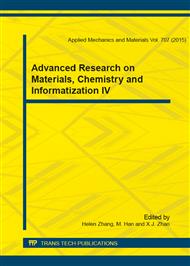[1]
G. Girija, J. R. Raol, R, Appavraj and S. Kashyap. Tracking filter and multi-sensor data fusion. Sādhanā, Vol. 25 (2000), pp.159-167.
DOI: 10.1007/bf02703756
Google Scholar
[2]
T. L. Chen and P. W. Que. Target recognition based on modified combination rule. Journal of Systems Engineering and Electronics, Vol. 17 (2006), pp.279-283.
Google Scholar
[3]
O. Basir and X. H. Yuan. Engine fault diagnosis based on multi-sensor information fusion using Dempster–Shafer evidence theory. Information Fusion, Vol. 8 (2007), pp.379-386.
DOI: 10.1016/j.inffus.2005.07.003
Google Scholar
[4]
S. Y. Chen and J. M. Hu. Variable fuzzy method and its application in parts recognition. Systems Engineering and Electronics, Vol. 28 (2006), pp.1325-1328.
Google Scholar
[5]
G. P. Tu. Probability fusion method for the data from different sources. Journal of Transducer Technology, Vol. 21 (2000), pp.42-44.
Google Scholar
[6]
Y. Liu, X. G. Gao and G. S. Lu. Multisensor target recognition based on the OWA aggregation operator. Journal of Transducer Technology, Vol. 19 (2006), pp.530-533.
Google Scholar
[7]
L. C. Che, X. J. Zhou and Z. N. Xu. Application of extension method in multisensory data fusion for parts recognition. System Engineering Theory and Practics, Vol. 20 (2000), pp.91-94.
Google Scholar
[8]
S. P. Wan. Method of interval deviation degree for uncertain multi-sensor target recognition. Control and Decision, Vol. 24 (2009), pp.1306-1309.
Google Scholar
[9]
Y. J. Guo. Comprehensive Evaluation Theory and Method. (Science Press, Beijing 2002).
Google Scholar
[10]
Opricovic S, Tzeng G H. Compromise solution by MCDM methods: A comparative analysis of VIKOR and TOPSIS. European Journal of Operational Research, Vol. 156 (2004), pp.445-455.
DOI: 10.1016/s0377-2217(03)00020-1
Google Scholar
[11]
S. Opricovic and G. H. Tzeng. Extended VIKOR method in comparison with outranking methods. European Journal of Operational Research, Vol. 178 (2007), pp.514-529.
DOI: 10.1016/j.ejor.2006.01.020
Google Scholar
[12]
Y. Shao, F. C. Shi and J. Peng. An approach of robot non-vision multi-sensor fusion. Acta Electronica Sinica, Vol. 24 (1996). pp.94-97.
Google Scholar


